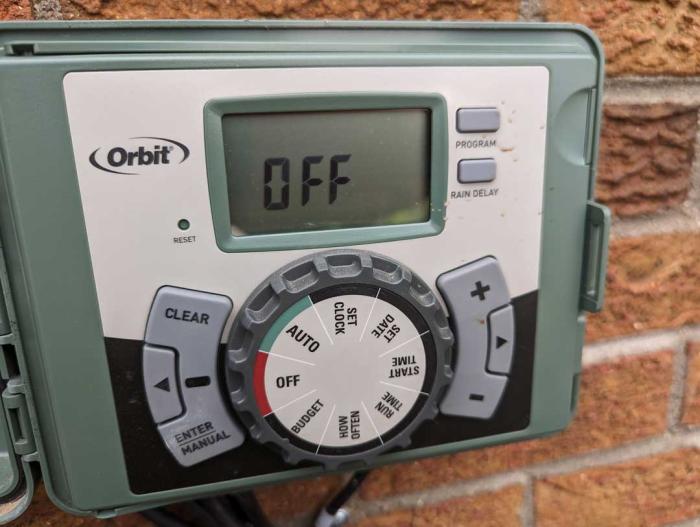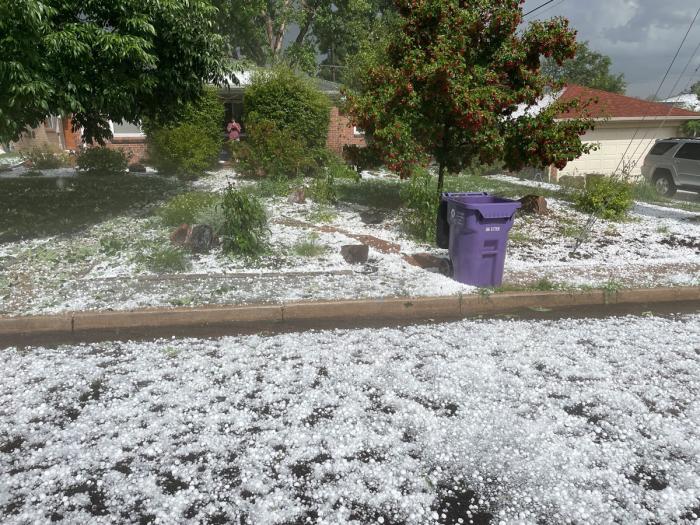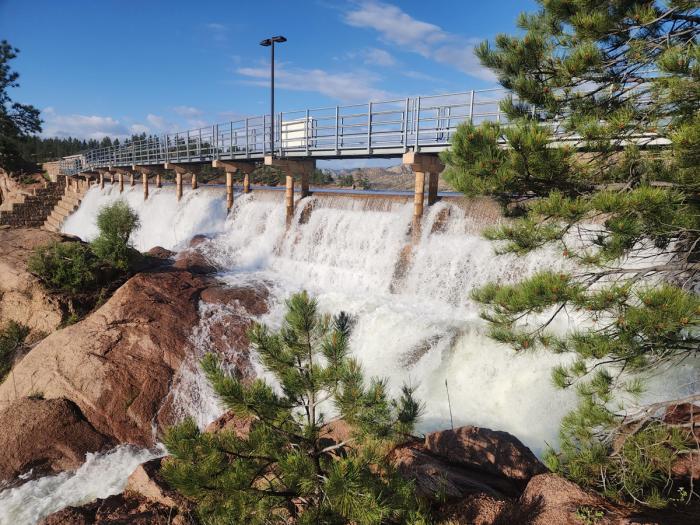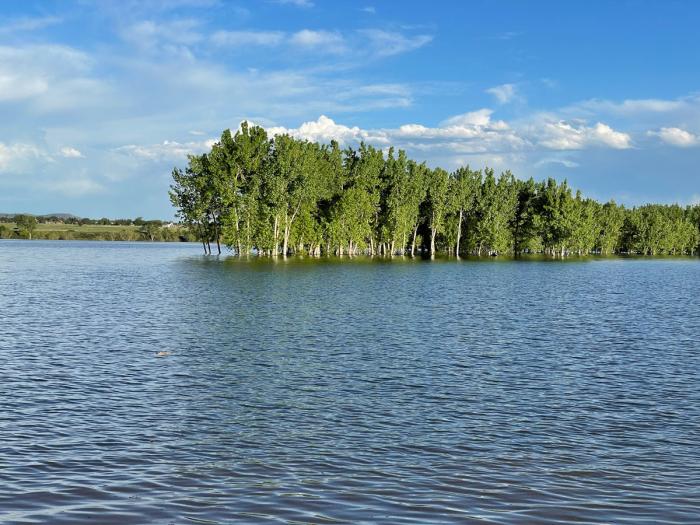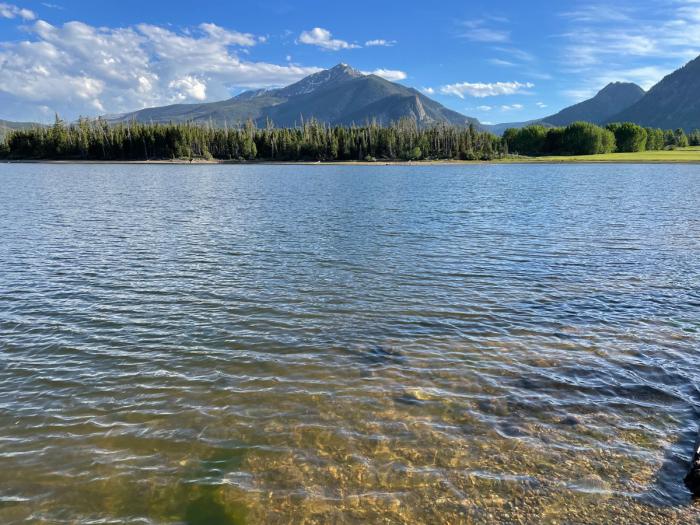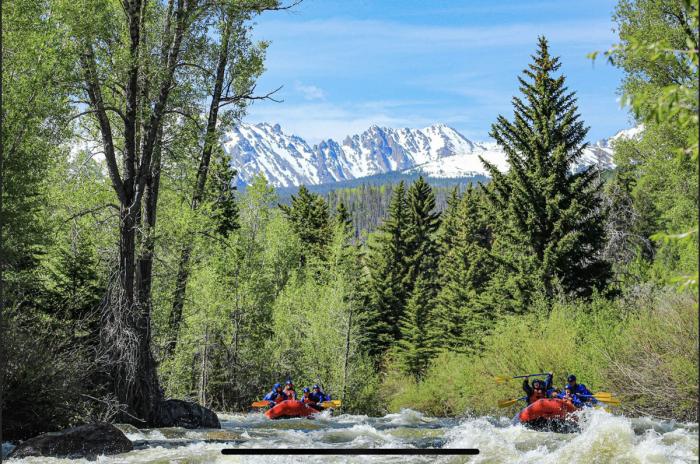Water use for June lowest since 1969
Record-setting rainfall across the metro area in June led Denver Water customers to turn their sprinklers off and leave them off — dropping customer demand to levels not seen in more than 50 years.
Denver Water customers used 5.6 billion gallons of water in June 2023, the lowest June water demand since 1969 — when customers used 5.1 billion gallons of water.
Put another way, water use among Denver Water’s customers last month was 37% below the average use for the month of June (8.9 billion gallons) seen from 1970 through 2022.
And the numbers are even more significant given that Denver Water’s service area has added 540,000 people since 1969. The state's largest water provider currently serves 1.5 million people in Denver and surrounding suburbs.
“This is really a testament to our customers and how they value water today,” said Greg Fisher, manager of demand planning at Denver Water.
“In the past, many people would simply turn on their sprinkler system in April and May and water their lawns regardless of the weather. What we’re seeing now is people are clearly paying attention to their irrigation systems and only watering when they need to — and that’s great to see.”
Outdoor irrigation accounts for roughly 40% of Denver Water’s overall water use. So when customers dial back their sprinklers, that reduces the need to use water captured and stored in mountain reservoirs.
Thanks to a good winter snowpack, wet spring weather and comparatively low demand for water, Denver Water was able to fill its major reservoirs in June, marking an important milestone Denver Water hopes to achieve for every year.
Cheesman and Dillon reservoirs reached capacity June 15 and 19, respectively.
The utility’s other large reservoirs, including Antero, Eleven Mile and Williams Fork, also are full.
Denver Water also reached a new milestone at Chatfield Reservoir by reaching a new, higher “full pool.” The U.S. Army Corps of Engineers owns Chatfield and allows Denver Water to store water in the reservoir.
Gross Reservoir in Boulder County will be held to around 60% of capacity due to water levels being kept low due to the Gross Reservoir Expansion Project.
“It’s always great to see our reservoirs fill in the spring,” said Nathan Elder, Denver Water’s manager of water supply. “While our overall snowpack was a little below normal, all the wet weather this spring in the city and the mountains really put us over the top.”
Denver Water collects water from the snow and rain that falls in the mountains and foothills west of Denver. Snow provides the majority of the water when it melts in the spring, then flows into rivers and streams that feed the utility’s reservoirs.
Recreation and environmental impact
The combination of good snowpack and wet spring weather, along with low irrigation demand from Denver Water customers, also provided a boost to recreation and the environment in the mountains.
After Dillon Reservoir filled on June 15, all the water coming down from melting snow in the mountains was no longer needed for water supply, so the snowmelt was allowed to continue moving downstream, which led to river flows high enough on the Blue River to allow the first significant commercial rafting season since 2019.
“More precipitation in Denver means less need to turn on sprinklers and that keeps more water in the rivers, which is much appreciated by rafting companies here in Summit County,” said Kevin Foley, president of Performance Tours in Frisco.
“It’s also great to see more xeriscaping in the Front Range as those low-water plants reduce demand on our mountain streams and also improves the fish habitat.”
When Dillon Reservoir is full, it also makes for great conditions for kayaking and paddleboarding and allows the marinas in Dillon and Frisco to be fully open.
Despite the wet weather pattern, Denver Water continues to focus on long-term water reliability through projects like the Gross Reservoir Expansion Project which will boost storage on the utilities’ northern collection system.
Denver Water also is pushing conservation with a new public awareness campaign and an effort to reduce the amount of irrigated nonfunctional or decorative grass, typically Kentucky bluegrass used for lawns, across its service area.
“We can’t always count on Mother Nature to give us all this snow and rain, so it’s important for all of our customers to look at ways to be efficient with their water use all year long,” Elder said.


